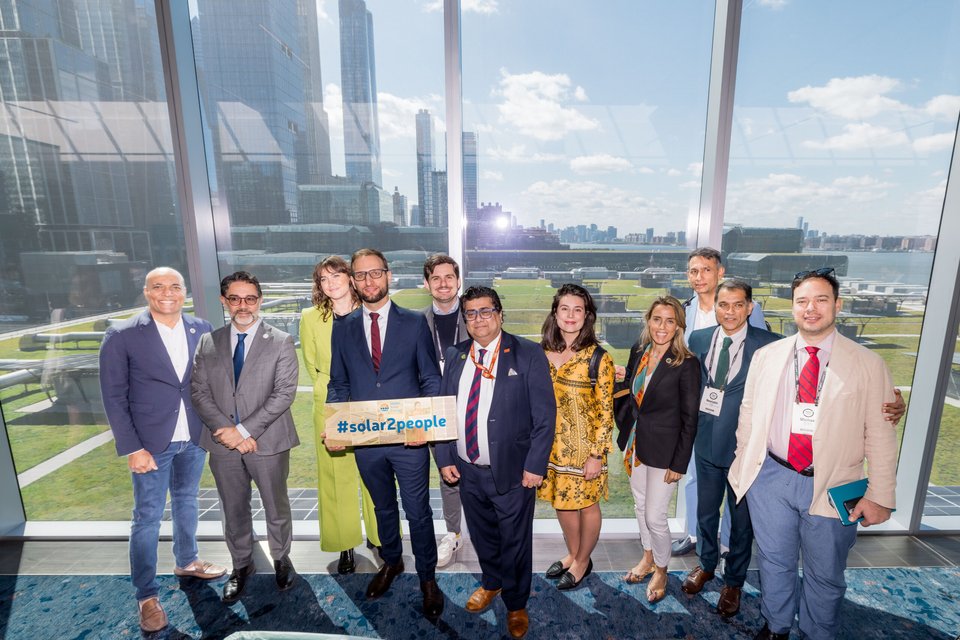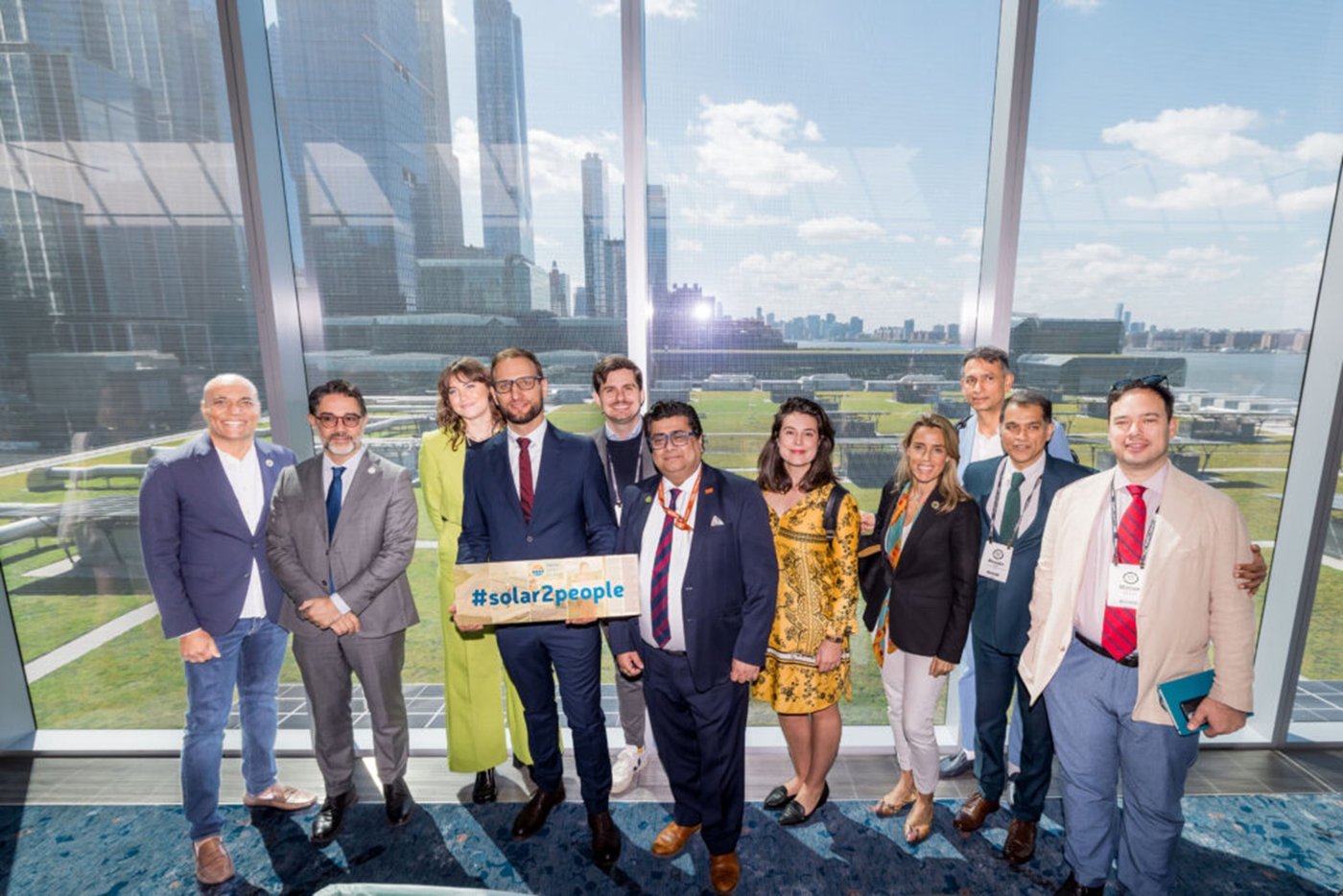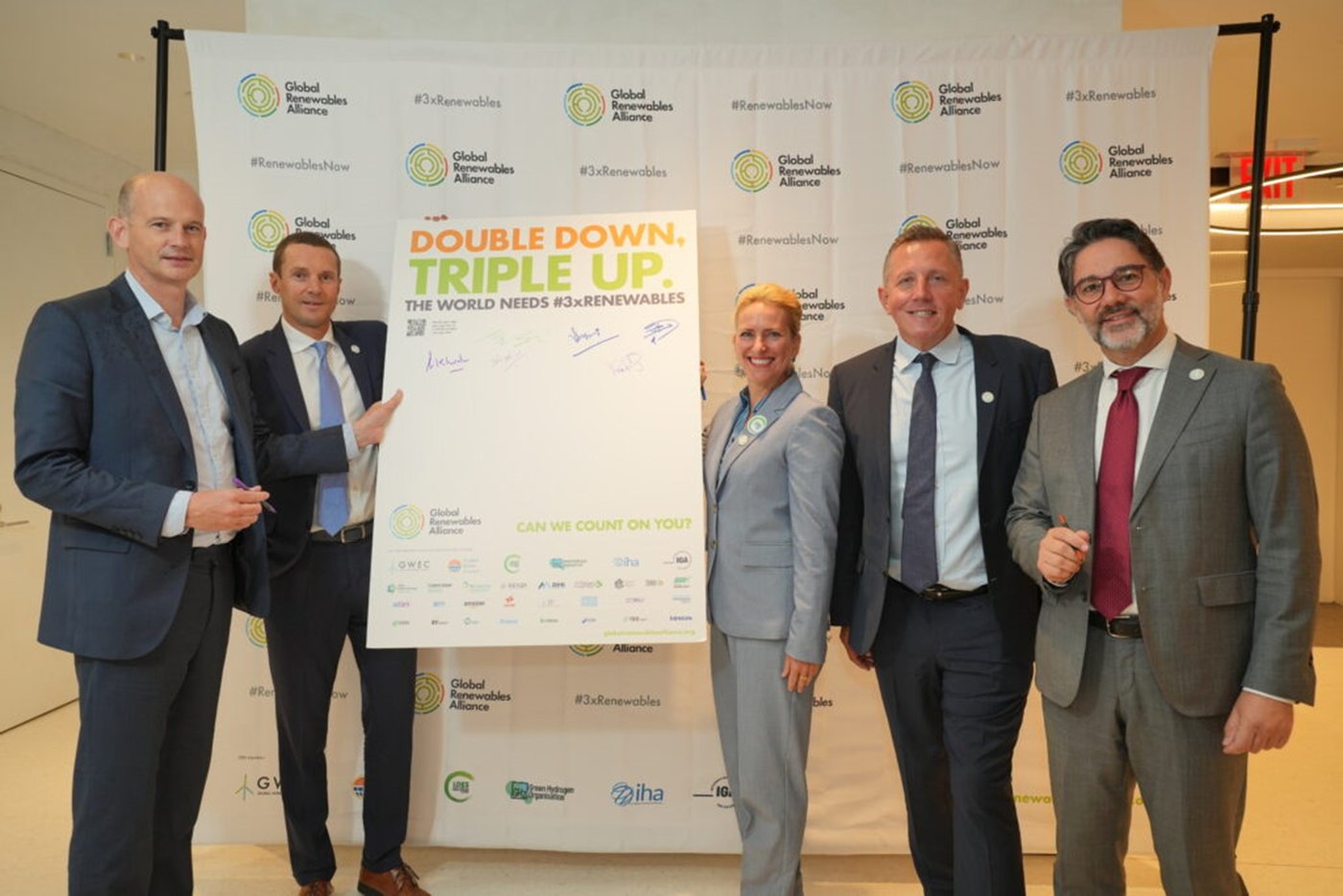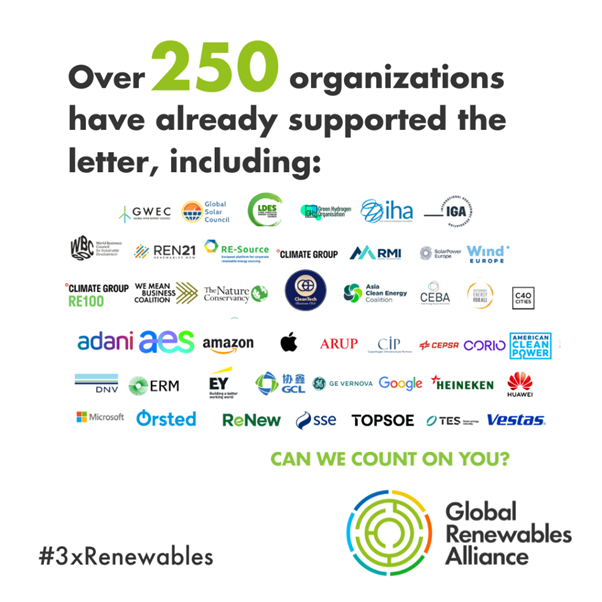GSC News
Turning ambition into action: Key takeaways from New York Climate Week


By: Gianni Chianetta, CEO, Global Solar Council
For the first time ever, the Global Solar Council participated in New York Climate Week to bring the power of solar to drive the energy transition and transform communities into the spotlight on a global stage. The week was filled with meetings, events, and initiatives on how to urgently scale-up solar and other renewables. But how do we turn these ambitions into action ahead of COP28?
People say that New York is the city that never sleeps. This was truer than ever as the city turned into a bustling hub of climate action and advocacy during New York Climate Week to make sure global leaders and organizations do not sleep on the urgent action that needs to be taken to avoid the worst impacts of climate change.
The Global Solar Council was among the group of climate leaders descending on New York during this important event with a clear message: solar power, with its potential to transform energy systems and economies, deserves the spotlight. As New York Climate Week unfolded, the world witnessed a fervent call to urgently scale up solar and other renewable energy sources. But how can we cut through the noise and take these ambitious discussions and channel them into concrete actions as we look forward to COP28?
Double down, triple up: An unprecedented call to scale-up renewable energy
To kick-off New York Climate Week, the Global Solar Council joined forces with the Global Renewables Alliance to launch the "3xRenewables" campaign. This ambitious initiative unites over 250 organizations, all echoing a shared vision: tripling renewable power capacity to 11,000 GW by 2030.

This call for action comes from a diverse cross-section of stakeholders across 6 continents in the energy sector: international governmental organizations, producers, buyers, supply chain actors, civil society, environmental groups and youth. This global target sends a clear signal to governments, industry, investors and civil society on a never-before-seen scale and speed of renewables deployment to limit global warming to a 1.5C pathway.
But this target is not some moonshot – in fact the COP28 Presidency, European Commission, G20 leaders, and head of international energy agencies are already convening around this target.
“The business case for renewables has never been stronger. But we must urgently overcome the systemic barriers across infrastructure, policy, and institutional capabilities in the coming years and build a new energy system that is run on renewables”, said Francesco La Camera, Director-General of the International Renewable Energy Agency on the call to action.
While each country and region will adopt a nationally determined approach to this common target, the campaign highlights universal enablers for accelerating renewable energy deployment. These enablers include, but are not limited to: committing to ambitious energy transition plans; fostering multilateral renewable energy partnerships and trade agreements; urgently streamlining permitting schemes; maximising the potential for nature-positive energy transition; and urgently investing in grid action plans.
So while there is a significant raising of ambition, there is also the solutions to back this ambition up. And the solar and wider renewable energy industry is ready to step-up and deliver.

How can we empower people with solar PV?
The International Energy Agency’s (IEA) new Net Zero Roadmap echoes the call for a tripling of renewable energy capacity from now to 2030, and sees solar PV playing a leading role in keeping the world on track to net zero. In fact, to stay on a 1.5C pathway the IEA is calling for a 20-fold increase of solar PV capacity by 2050, which means that solar would make up around one-fifth of the world’s energy supplies.
To get to these levels, the IEA calls for annual additions of at least 630 GW of new solar capacity from now until 2030. While this is a significant step-up from where we are today, the industry and supply chain is ready to deliver.
In fact, according to SolarPower Europe’s Global Market Outlook, supported by the Global Solar Council, the industry is expected to reach annual capacity additions of 1 TW by 2030. This means that the solar industry can and will play a major role in ensuring that the world stays on track to reach net zero by 2050 and avoid the worst impacts of climate change.
But to help get to these installation levels, there is still one relatively untapped source of solar PV potential: distributed solar.
Distributed solar can be a key technology to empower individuals, businesses, cities, rural areas, and other energy-intensive sectors to take the energy transition into their own hands. Not only this, but distributed solar can also be an important driver of socioeconomic benefits through the creation of new local jobs, business opportunities, and providing cost-competitive and reliable energy.

The Global Solar Council co-organized an event with the International Solar Alliance with the support of the European Union and Global Renewables Alliance to discuss how to unlock this untapped decarbonization and economic potential for distributed solar. We gathered high-level representatives from government, the solar industry, development agencies, the health sector and more to better understand global trends across different sectors and regions to scale-up distributed solar PV.
"Meeting the goal of tripling global renewable energy capacity by 2030 is ambitious - but entirely achievable. Since solar will make up the majority of the capacity needed to meet this goal, scaling-up solar is critical. Distributed solar is so far an under-utilised tool, and untapping its potential will be essential to empower individuals, businesses, communities, and cities to urgently move forward the energy transition", said Máté Heisz, Chair of the Global Solar Council.
https://twitter.com/JorgensenJuul/status/1704341158996906494
From discussions at the event, there are some clear actions that can be taken to realize distributed solar’s potential, including: streamlined permitting and grid connection, public and private partnerships and collaboration, supporting innovative solutions like digitalisation, access to finance, and increasing skilled workforce, especially in emerging markets.
The Global Solar Council is in full support of these solutions, and in fact recently published a report ‘Scaling-up distributed solar generation’ that builds on these recommendations and provides further analysis on the potential for distributed solar in 12 markets across the world. This report is an important toolkit for policymakers to accelerate deployment of distributed solar, and we will publish an updated version of the report with analysis on new markets and further deep-dives into the recommendations at COP28.
Turning Ambition into Action: The Path to COP28
“We know what needs to be done, we simply need to take action. Solar is absolutely critical to achieving our climate goals and energy security”, said Ditte Juul Jørgensen, Director-General for Energy for the European Commission, at our Empowering People with Solar PV event.
This statement is a good overall take away from New York Climate Week. Amidst all the talk and events, it is pretty clear that we know what the solutions are to keep the world on a 1.5C pathway, with solar and other renewables being one of the most important solutions readily available today. We also know where we need to be in terms of renewable energy capacity, and what mechanisms and solutions are needed to realize this scaling-up of capacity.
So how do we build on this momentum from New York Climate Week and turn ambition into action on the road to COP28?
Well, the Global Solar Council is working closely with other renewable energy associations, international institutions, governments and other stakeholder to secure firm commitments on scaling-up global renewable energy ambition along with commitments to put in place the mechanisms and solutions needed drive this scale-up. This collaboration in parallel with knowledge sharing across different countries and sectors will be key to make sure urgent action is taken to keep the world on track for net zero.
You can also join in the call to triple global renewable energy capacity by 2030 by signing the open letter. The more voices we have echoing the call to action, the louder it will ring in the ears of policymakers to take the action required to make the necessary “quantum leap in climate action”.
Keep watching this space on the road to COP28 to find out more on how the Global Solar Council is helping turn ambition into action and build a world powered by solar.
![Global Solar Council [logo]](/static/images/gsc-logo-horizontal.svg)